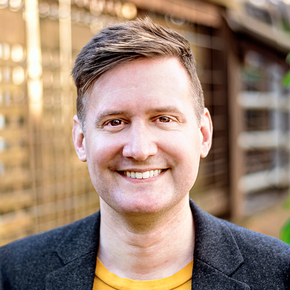The past three years have provided an unprecedented amount of federal grant opportunities to fund grid reliability, resiliency, decarbonization, and energy efficiency. You’ve probably had more than a few of those notices of funding opportunities (NOFOs) land in your inbox.
Federal grant opportunities can feel intimidating. Concept papers, technical project details, equity plans, environmental reviews, supplemental forms, compliance with federal purchasing restrictions, and securing letters of support from a multitude of partners. The NOFO application window starts to feel very short when you start to evaluate the opportunity.
Perhaps you’ve applied for a few opportunities, or maybe you’re like many who have been overwhelmed by the process of identifying if your project idea is a fit or felt you were unprepared to complete the submission package. Too many transformational projects go unfunded because of the extensive requirements and learning curve.
You’re not alone. A lot of experienced grant writing teams are having to adapt to the rigors of modern federal grant submissions.
I’ve been lucky to learn from grizzled grant writers with decades of experience. Their approach was somewhere between researcher and salesperson. They understood how to take the merits of a project and adapt to ensure the pitch stood out to grant reviewers. That mindset, combined with strong technical writing skills, secured them countless awards. Emulating the approach of the experienced grant writers led to winning grants for my own projects for years, but to pursue a modern-day federal NOFO you need an updated approach to win.
The federal government has made changes to their submission approach in an effort to ensure historically disadvantaged communities receive at least 40% of the benefits of grant funds. Addressing community inequities in funding proposals requires more from grant teams than ever before. It also creates opportunities for new partnerships that will improve programs and strengthen funding.

A compelling grant requires collaboration
While technical merits and a history of execution still matter, today’s grant application strategy can be as much about the team you’ve assembled as it is about the nuts and bolts of the project. Engagement strategies are critical components to ensuring you’re delivering the grant benefits equitably in your Community Benefits Plan. That means you’ll need to assemble a team that likely includes community-based organizations (CBOs), and you will need to demonstrate the support of:
- Government agencies
- CBOs
- Workforce representatives
- A multitude of other stakeholders
Though the increased importance on collaboration may be intimidating, it is incredibly rewarding. In my 15 years of government leadership, I’ve had the opportunity to collaborate on many federal grant applications with multiple stakeholders. With the new federal funding requirements which require more stakeholder engagement, I’ve found that the act of convening a robust team of community voices has opened the door to significant and impactful funding awards. Additionally, this collaboration has positioned our teams to be even more competitive in recent years.
Working together to expand partnership opportunities
Today’s funding requirements provide greater opportunities for collaborative partnerships. While it’s easy to assume your organization must always be the project lead, there are opportunities for utilities to advance their critical work as a funding sub-recipient, rather than serve as a prime recipient.
In my previous city government position, if I felt I was an unlikely prime recipient due to time-constraints or capacity, I found it immensely helpful to convene partners and discuss potential grant opportunities. These discussions allowed us to brainstorm ideas for funding my organization may not have been eligible for but could serve as a sub-recipient, contractor, or partner. Most importantly, these conversations opened the door to building a community of collaborators united by a shared vision.
In addition to being more well-equipped to drive your own applications, you will have a community of collaborators that are familiar with your goals and needs. By knowing your priorities and strengths, these collaborators will be more likely to bring you into funding opportunities as a sub-recipient, contractor, or partner for opportunities in which you aren’t an eligible prime.
If you have a transformative idea, and a federal funding opportunity has caught your eye: start by engaging your community. Conversations with potential collaborators may open the door to not just funding opportunities, but greater impact. To make community-wide, transformative changes, you will need community-wide participation and support.
 Get the Federal Funding 411
Get the Federal Funding 411
At Milepost, we work with government entities, public power, and businesses who want to do good for people and the planet. Our team drives award-winning grant applications for governments and utilities that meaningfully engages stakeholders from large regions.
Our new training series, Federal Funding 411: The Strategy Behind Today’s Most Effective Grant Proposals, can provide you with everything you need to know to get started assembling your own federal grant application.
Sign up for our upcoming events:
Part 1: Preparing to Apply (Free Webinar)
Tuesday, February 13, 2-3pm ET
Part 2: Application Anatomy (Free Webinar)
Tuesday, February 20, 2-3pm ET
Part 3: Masterclass (Limited spots available!)
Visit this page for dates and availability

